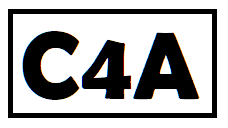Electrical Calculation: Amper Volt and Kilowatt Converter
Understanding Electrical Calculation
Electrical Calculation involves determining the relationships between Amperage (current), Voltage, and Power in electrical systems. These calculations are fundamental in designing and troubleshooting electrical circuits.
The Basic Formula
The relationship between these three quantities is described by Ohm’s Law and the Power Law:
\[ P = V \times I \] where \( P \) is Power in Watts (W), \( V \) is Voltage in Volts (V), and \( I \) is Amperage in Amperes (A).Calculating Amperage
To calculate Amperage (\( I \)), rearrange the formula:
\[ I = \frac{P}{V} \]Example: If you have a power of 1000 W and a voltage of 220 V, the amperage is:
\[ I = \frac{1000}{220} \approx 4.55 \text{ A} \]Calculating Voltage
To calculate Voltage (\( V \)), rearrange the formula:
\[ V = \frac{P}{I} \]Example: If you have a power of 1000 W and an amperage of 5 A, the voltage is:
\[ V = \frac{1000}{5} = 200 \text{ V} \]Calculating Power
To calculate Power (\( P \)), use the basic formula:
\[ P = V \times I \]Example: If you have a voltage of 120 V and an amperage of 10 A, the power is:
\[ P = 120 \times 10 = 1200 \text{ W} \]Why Use Electrical Calculation?
Electrical Calculation is crucial for ensuring the safe and efficient operation of electrical systems. It helps in selecting appropriate wire gauges, circuit breakers, and other components to prevent overloading and potential hazards.

Common Terms in Electrical Calculations
Understanding key terms is essential for performing accurate electrical calculations:
- Amperage (Ampere, A): The rate of flow of electric current, measured in amperes.
- Voltage (Volt, V): The potential difference that drives the electric current, measured in volts.
- Power (Watt, W): The rate at which energy is transferred by an electric circuit, measured in watts.
- Kilowatt (kW): A unit of power equal to 1000 watts.
- Ohm (Ω): The unit of electrical resistance, named after Georg Ohm.
Practical Applications
Electrical Calculation is used in various fields including:
- Home electrical installations
- Industrial electrical systems
- Automotive electronics
- Renewable energy systems
Real-World Examples
Example 1: Home Electrical Wiring
Suppose you want to install a new light fixture that requires 60 W and operates at 120 V. To determine the amperage required:
\[ I = \frac{P}{V} = \frac{60}{120} = 0.5 \text{ A} \]This means the light fixture will draw 0.5 amperes of current.
Example 2: Industrial Motor
An industrial motor consumes 5000 W at 230 V. To find the amperage:
\[ I = \frac{P}{V} = \frac{5000}{230} \approx 21.74 \text{ A} \]This indicates the motor requires approximately 21.74 amperes of current.
Example 3: Solar Panel System
A solar panel system generates 250 W at 12 V. To determine the amperage:
\[ I = \frac{P}{V} = \frac{250}{12} \approx 20.83 \text{ A} \]This means the solar panel system produces approximately 20.83 amperes of current.
Conclusion
Mastering Electrical Calculation allows you to confidently design, analyze, and troubleshoot electrical circuits. Whether you’re a professional electrician or a DIY enthusiast, understanding these fundamental concepts is essential for ensuring safety and efficiency in electrical systems.
